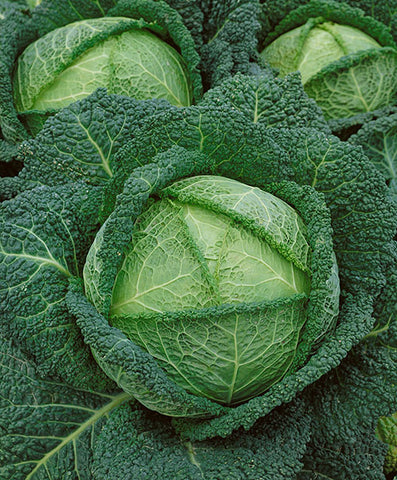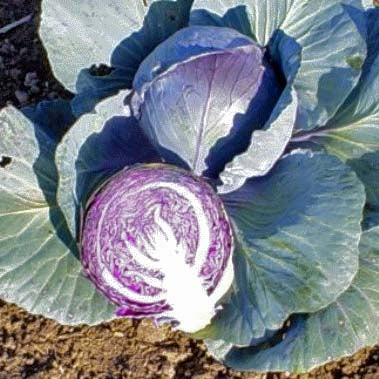SEED CALCULATOR ❌
Number of Plants 0
Weight 0 oz
at 0 seeds per foot

Cabbage
Brassica oleracea (wild)Certification
Color
Size
Shape
Heritage
Season
The wild ancestor of cabbage, originally found in Britain and continental Europe, inhabits rocky cliffs in cool damp coastal habitats. Headed cabbages first appeared in the Dark Ages, illustrations show their prominence in cuisine of the Middle Ages. French naturalist Jean Ruel made the first mention of head cabbage in his 1536 botanical treatise De Natura Stirpium, referring to it as capucos coles "head-stem". In the 1800s headed cabbages were divided into five categories: flat, round, egg or sugar loaf, elliptic and conical. Three colors are mentioned: white, green and purple. “The Vegetable Garden” by Vilmorin lists 57 varieties available to growers in 1883. Many of the varieties listed by Vilmorin are still available in Euporse and through seed importers in the U.S.. Delicious cabbage recipes.
Companions: onions, potatoes, dill, chamomile, sage, peppermint rosemary, hyssop, thyme, wormwood, southernwormwood
Inhibitors: tomatoes, strawberries, pole beans

-
Price List
The wild ancestor of cabbage, originally found in Britain and continental Europe, inhabits rocky cliffs in cool damp coastal habitats. Headed cabbages first appeared in the Dark Ages, illustrations show their prominence in cuisine of the Middle Ages. French naturalist Jean Ruel made the first mention of head cabbage in his 1536 botanical treatise De Natura Stirpium, referring to it as capucos coles "head-stem". In the 1800s headed cabbages were divided into five categories: flat, round, egg or sugar loaf, elliptic and conical. Three colors are mentioned: white, green and purple. “The Vegetable Garden” by Vilmorin lists 57 varieties available to growers in 1883. Many of the varieties listed by Vilmorin are still available in Euporse and through seed importers in the U.S.. Delicious cabbage recipes.
Companions: onions, potatoes, dill, chamomile, sage, peppermint rosemary, hyssop, thyme, wormwood, southernwormwood
Inhibitors: tomatoes, strawberries, pole beans


